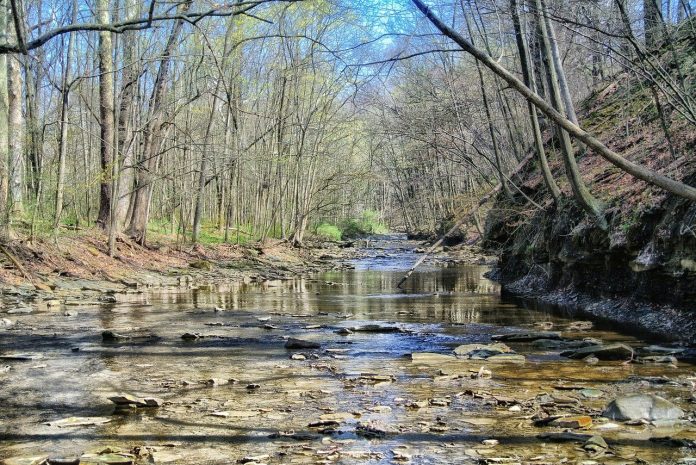Many counties in Northeast Ohio straddle the continental divide. Many of the streams form the headwaters for the Great Lakes Watershed to the north while others flow south, eventually draining to the Gulf of Mexico by way of the Tuscarawas, Muskingum, Ohio and Mississippi Rivers.
Some of the streams have familiar names like the Black, the Rocky Rivers, Chippewa and Killbuck Creek, but nearly 75% of the stream miles are composed of smaller, unnamed streams. While a small percentage of the stream miles are located in parklands and are accessible to the public, the vast majority of streams flow across privately owned land.
Individuals own the land that forms the stream channel on their property. The water, however, is owned by the state. The property owner can use the water but not in ways that infringe on the rights of others.
Most stream owners realize the benefits afforded by streams flowing across their land and seek ways to preserve the functions of these valued resources.
When making decisions on using or modifying their streams, stream owners may wish to consider the Laws of Ecology, four common-sense principles proposed by Washington University’s Dr. Barry Commoner in the early 1970s.
Everything must go somewhere
Precipitation that falls to earth is basically subject to one of three fates in our area. Some water returns to the atmosphere through evapotranspiration. A large amount of water soaks into the earth to become groundwater.
The rain that is leftover flows over the surface as runoff. The amount of this runoff is greatly influenced by the percentage of manmade surfaces such as paved roads, parking lots and rooftops. These impervious structures prevent water from infiltrating into the ground.
Everything is connected to everything else
Small headwater streams merge to create a network of streams that drains an area. This drainage basin is referred to as a watershed. Smaller watersheds in turn join to form larger ones. Everyone lives in a watershed (even those of us who do not have streams flowing across our property).
Everything we do on the land’s surface affects the watershed. In Medina County, three watersheds eventually drain into Lake Erie from which some of the water is treated and piped back to us as drinking water.
Nature knows best
Healthy streams are characterized by an S-shaped meandering pattern, vegetated banks and open access to floodplains. These features allow excess stormwater to be slowed, absorbed and treated to remove sediments, nutrients and bacteria.
When we remove streamside vegetation, attempt to straighten channels, build on floodplains and otherwise interfere with natural stream functions, we set ourselves up for future problems. Remember, nature has had four and a half billion years to get it right!
There is no such thing as a free lunch. While it is easy to think of streams as mere conveyances, there is a price to pay for not caring for them. Monetary costs include the price of purifying drinking water, dredging harbors and mitigating property damage from floods.
The non-monetary costs in terms of the loss of species, voids in the ecosystem and the impact on future generations may be even more significant.
How can I help to protect my stream?
In many cases, it is best to create a buffer area (riparian setback) from the edge of the stream. Most smaller streams should have a 25-foot setback. This is an area that native vegetation should grow. Trees work the best; however, shrubs and native grasses can work also.
The key is not to farm or have a manicured lawn up to the edge of the stream. By all means, allow yourself access to the edge but limit the amount next to the stream. If actual streambank stabilization is required, mainly due to a structure in danger, hard armament may be needed. In most cases, you need to contact the Army Corps of Engineers to ask if a permit is required to do work in the stream channel.
You can call your local soil and water office, and they can help you navigate the process of working with the Corp. To learn more about the streams on your property, visit medinaswcd.org.













